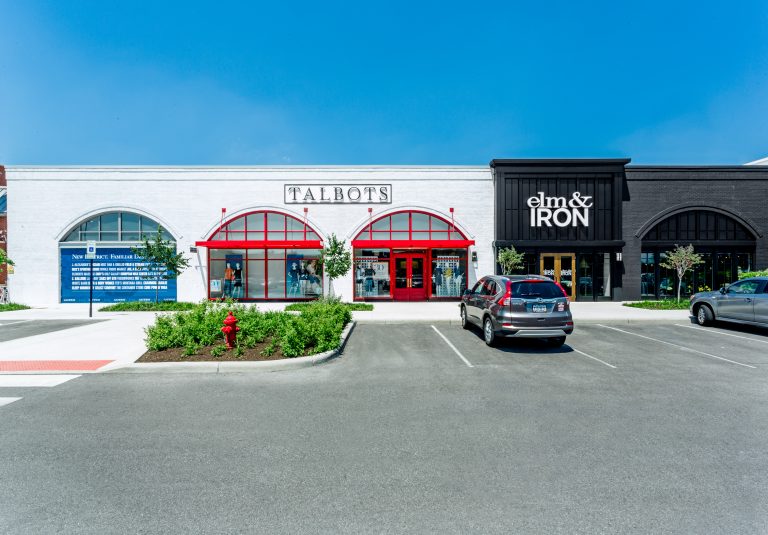By Spencer Jordan, Senior Vice President of Leasing, Steiner + Associates
It is not a stretch to suggest that the impact and influence of big box retailers—a category that includes several of the most iconic brands in the business—carries a weight that is commensurate with their size. Which is why the ongoing evolution in the big box sector is one of the most interesting and important stories in retail.
Understanding the way the big box players are evolving in everything from merchandising and operations to store size, layout and design provides some fascinating insights into the state of the broader retail landscape. The evolution of big box concepts is particularly relevant now, in a post-COVID environment where so much has changed in a relatively short period of time and when consumer preferences and priorities are driving a historically high level of retail innovation and experimentation.
Winners and Losers
Understanding retail today starts by looking at the industry through a pandemic prism. The retail concepts that managed to succeed during the pandemic include home, sporting goods, luxury, beauty, club retailers and big box concepts. Home goods and luxury make intuitive sense, given the fact that wealthier consumers had more disposable income, and all consumers were generally more focused on improving the place where they were spending almost all of their time. But why big box? The Targets, Costcos and Dick’s Sporting Goods of the world remained successful in large part because they have been able to offer a range of goods that appeals to all demographics. That shift has been sticky, as more households look to big box brands as reliable sources of both quality and affordability, even in the face of post-pandemic inflation and other economic headwinds.
Multi-Channel Takes Off
When grocery stores started leaning into online ordering and streamlined in-person and in-store pickup models, the popularity and prevalence of that approach shifted consumer perspectives and behaviors in significant ways. Outside of grocery operators, no one benefited more from that shift than the big boxes. Many big box retailers have invested heavily in upgrading their multi-channel capacity. For example, Dick’s is effectively using its brick-and-mortar locations to fulfill the vast majority of their online sales, increasing inventory by approximately 50 percent and fulfilling up to 90 percent of online transactions through its in-store network. Easton Town Center’s Easton Gateway district, home to approximately 500,000 square feet of big box retail, including names like Costco, Dick’s Sporting Goods and REI, has experienced a similar shift in multi-channel capacity, driving both increased sales volumes and foot traffic.
Click-and-Pick Changes
The fundamental site selection process and demographic criteria has not changed much, if at all, for most big box brands. What is changing is the design and operational parameters inside those boxes, a reflection of how big box operators see their stores operating within their network: as not just brick-and-mortar sales venues, but as de facto online fulfillment centers. Another noteworthy part of that shift is how Target, Walmart, and others have adapted their parking field utilization strategies, making room for pickup lanes and dedicated parking for click-and-collect shoppers. The ongoing transformation of big box fulfillment models heralds the kind of change that ripples across the industry. Regional players are already following the lead of the larger big box brands and adopting some of the same operational and design changes.
Bigger and Smaller
While a significant number of inline retailers are experimenting with smaller formats and leaner merchandising concepts that will provide them with the flexibility to fit into different spaces and markets, big box concepts are going in the other direction: they are taking on more GLA. In many cases, those larger formats are designed to accommodate a bigger back-of-house component capable of handling the increased volume of multi-channel commerce and click-and-pick shopping. Retail giant Walmart, for example, recently announced that it plans to “build or convert more than 150 large-format stores over the next five years.” While some will be conversions of existing locations, the majority of those will be new stores.
Challenges and Opportunities
When we look to the future of big box retail, the influence of Amazon’s pricing and logistics, which continues to be the e-commerce elephant in the room for convenience retail, remains one of the biggest factors shaping retail decision-making. Store design changes, logistics upgrades, and same-day pickup options are, in some respects, a direct response to the post-pandemic acceleration of the “Amazonification” of want-based retail. One place where big box brands may have the best opportunity to carve out their own space is through the loyalty programs which continue to expand. Names like Costco, Ulta Beauty and Sam’s Club have led the way, and other brands are following suit.
When we look at how big box has evolved over time, these post-pandemic changes, while not always obvious on the outside, represent some of the most significant and potentially impactful retail changes in recent memory. It is perhaps not an exaggeration to say that big box concepts are among the leading innovators in retail right now. The fascinating part will be to see if that innovation can lead to long-term success.
About the author
 Spencer Jordan is the Senior Vice President of Leasing for Columbus-based Steiner + Associates, the co-owner, developer and manager of the award-winning Easton Town Center and corresponding Easton Gateway. To reach Spencer directly, email sjordan@steiner.com.
Spencer Jordan is the Senior Vice President of Leasing for Columbus-based Steiner + Associates, the co-owner, developer and manager of the award-winning Easton Town Center and corresponding Easton Gateway. To reach Spencer directly, email sjordan@steiner.com.
Related Articles

Hexnode CEO on how the “Holiday Illusion” is Masking the Risks of Retail’s Seasonal Workforce
The danger of seasonal hires is magnified not just by who is accessing the network, but when they are doing it. Sophisticated threat actors possess a deep understanding of the retail operational calendar.

The New Frugality: How Inflation and Tariffs Are Reshaping Consumer Spending
One of the most telling shifts is how shoppers approach decision-making. Where convenience once dominated, consciousness now plays a larger role. People are researching more before making a purchase, comparing prices across multiple platforms, and questioning whether they really need the product in the first place.

Embracing new concepts vs the return to brick-and-mortar
Balancing the return to physical retail and the development of new technologies to enhance customer experience and drive operational efficiency for long-term success.
Enartis to Acquire Parsec in Winemaking and Retail Deal
The deal will bring Enartis and Parsec together to help wineries manage every part of production more easily and efficiently, from grape to bottle.


 for the latest news and job opportunities in retail tech
for the latest news and job opportunities in retail tech 